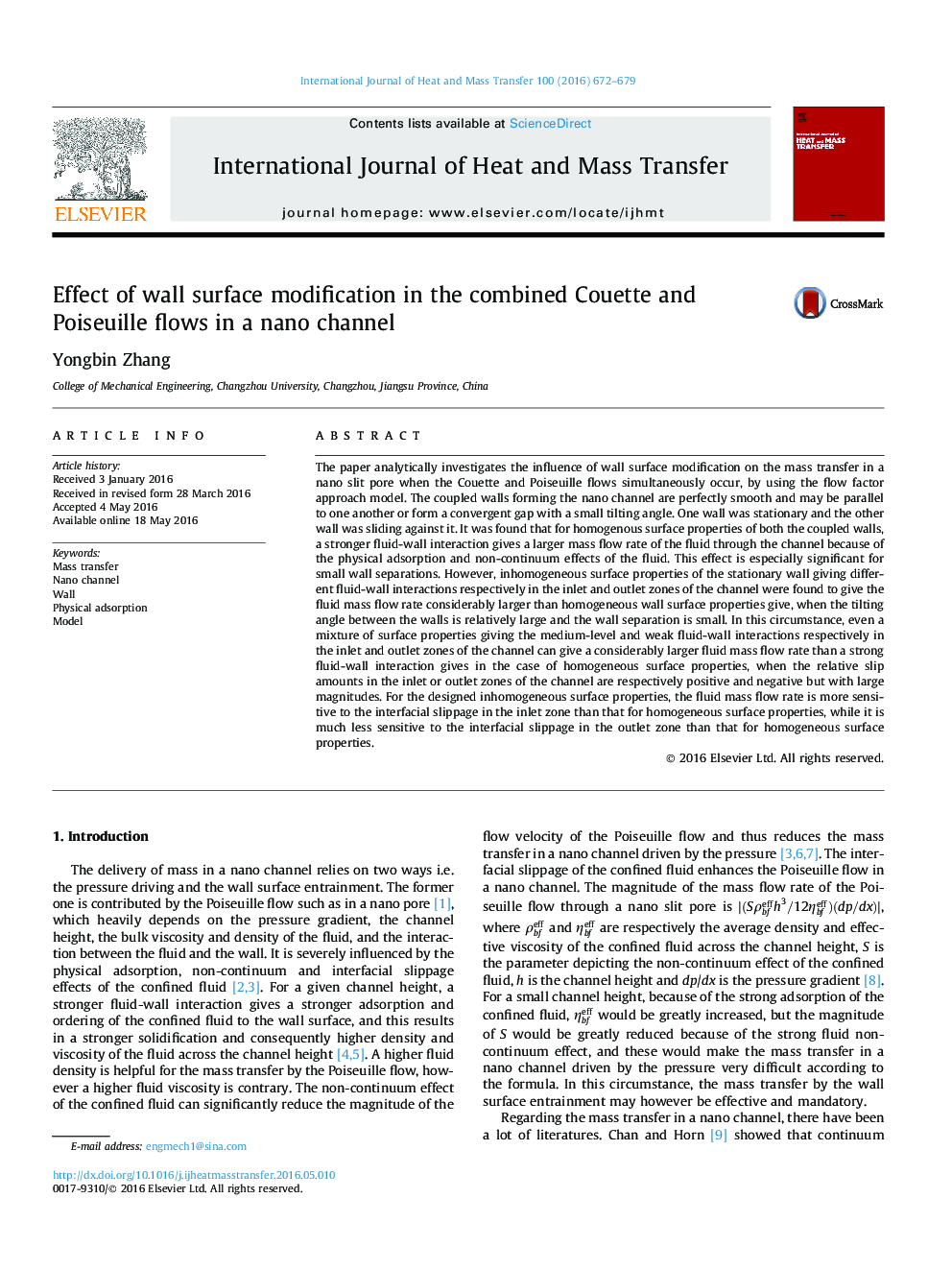| کد مقاله | کد نشریه | سال انتشار | مقاله انگلیسی | نسخه تمام متن |
|---|---|---|---|---|
| 656394 | 1458042 | 2016 | 8 صفحه PDF | دانلود رایگان |

• For homogeneous wall surfaces, a stronger fluid-wall interaction gives a larger mass flow rate through the channel.
• For the designed inhomogeneous stationary wall, a significantly greater mass flow rate can even be obtained than for homogeneous wall surfaces.
• The W–M type of interaction may just be needed for generating a satisfactory flow rate through the channel instead of seeking a strong fluid-wall interaction.
The paper analytically investigates the influence of wall surface modification on the mass transfer in a nano slit pore when the Couette and Poiseuille flows simultaneously occur, by using the flow factor approach model. The coupled walls forming the nano channel are perfectly smooth and may be parallel to one another or form a convergent gap with a small tilting angle. One wall was stationary and the other wall was sliding against it. It was found that for homogenous surface properties of both the coupled walls, a stronger fluid-wall interaction gives a larger mass flow rate of the fluid through the channel because of the physical adsorption and non-continuum effects of the fluid. This effect is especially significant for small wall separations. However, inhomogeneous surface properties of the stationary wall giving different fluid-wall interactions respectively in the inlet and outlet zones of the channel were found to give the fluid mass flow rate considerably larger than homogeneous wall surface properties give, when the tilting angle between the walls is relatively large and the wall separation is small. In this circumstance, even a mixture of surface properties giving the medium-level and weak fluid-wall interactions respectively in the inlet and outlet zones of the channel can give a considerably larger fluid mass flow rate than a strong fluid-wall interaction gives in the case of homogeneous surface properties, when the relative slip amounts in the inlet or outlet zones of the channel are respectively positive and negative but with large magnitudes. For the designed inhomogeneous surface properties, the fluid mass flow rate is more sensitive to the interfacial slippage in the inlet zone than that for homogeneous surface properties, while it is much less sensitive to the interfacial slippage in the outlet zone than that for homogeneous surface properties.
Journal: International Journal of Heat and Mass Transfer - Volume 100, September 2016, Pages 672–679